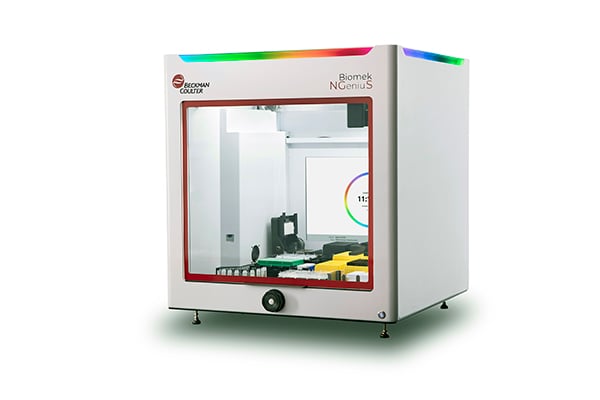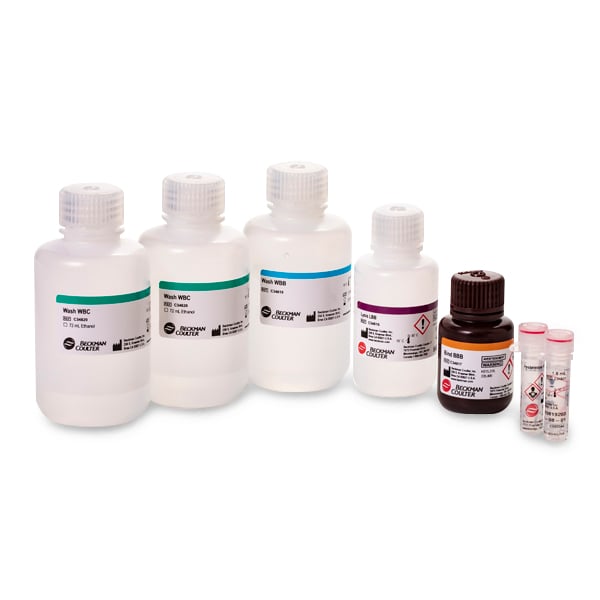Next-generation sequencing (NGS) has evolved rapidly since it was first introduced, with technological advancements enabling entire libraries to be produced from under 100 pg of genomic DNA in a fraction of the time of Sanger sequencing. In addition, NGS is now more affordable than ever before, making high-throughput sequencing accessible to laboratories of all sizes and budgets around the world.
In recent years, the technique has been used widely for rapid, large-scale population sequencing to track the evolution of SARS-CoV-2 in real time. These results were crucial for detecting mutations leading to the emergence of novel viral strains, supporting infection control measures and the distribution of medical resources.
The ability to perform high-throughput and complex experiments, coupled with the lower price point of newer sequencing platforms, have understandably encouraged the uptake of NGS across a variety of different fields beyond pure genomic research, such as clinical diagnostics, agriculture, and forensics.
Cancer researchers have particularly embraced recent advances in this technology, where single cell sequencing is now being used to investigate the genetic mutations within tumor cell subpopulations that drive disease recurrence. These insightful studies could pave the way towards more effective treatments for a range of cancers.
Enhancing NGS workflow efficiency with automation
The increased throughput provided by NGS is ideal for advancing discoveries that may one day translate to healthcare solutions. However, preparing libraries for NGS can be enormously time consuming, sometimes taking several days for more complex protocols, such as those involving hybridization capture. Accurate records must be maintained of which samples received which adapter, and even small pipetting inconsistencies can jeopardize library quality.
Automating NGS library preparation can help to address these challenges, as library preparation automation platforms can rapidly process many samples in parallel, streamlining laborious liquid handling tasks. They also eliminate the majority of manual processing steps, removing the opportunity for inter-operator variations and manual pipetting errors, for higher quality NGS libraries. Reducing hands-on time frees scientists to concentrate on more challenging tasks and explore new research areas, enhancing productivity and job satisfaction.
In addition, NGS workflow automation can allow operators to make use of typically non-work hours, as platforms can be programmed to run unsupervised overnight, so that libraries are ready for use first thing in the morning. Running instrumentation during lab downtime supports more streamlined working, and means staff no longer need to work overtime to complete tedious manual tasks, promoting a healthy work-life balance.
Automated library preparation can help to improve staff satisfaction in other ways too, as it drastically reduces the risk of incurring repetitive strain injuries due to extensive manual pipetting, which can negatively impact worker well-being and pipetting ability. Repetitive strain injuries may also cause staff absences and high turnover rates, negatively affecting lab productivity in the long run.
A customized NGS workflow for built-in flexibility
Automation can be incorporated into each stage of NGS sample preparation according to the specific needs and throughput requirements of the individual lab. This could mean simply automating the steps necessary to prepare biological samples for nucleic acid extraction once they are received in the lab.
Some NGS facilities may instead prioritize quick turnaround times, and want the ability to process a small number of samples at a time, rather than waiting to accumulate enough specimens to run a full batch. In these cases, the lab may benefit from a smaller liquid handler, purpose-built for NGS library preparation, like our Biomek NGeniuS Next Generation Library Prep System.
The Biomek NGeniuS system can process 4-24 samples simultaneously, and features an extensive library of NGS sample prep protocols. It also includes an on-deck thermocycler, gripper and reagent aliquoter to enable shorter turnaround times for smaller sample numbers. Up to 50 Biomek NGeniuS instruments can be connected together to increase capacity over time as needed, or for device backup in case of maintenance in labs that cannot afford any downtime.
Software that makes NGS library prep automation available to all
On top of this, using the intuitive software requires no sophisticated programming skills – making the program easy to set up and run – and the Biomek NGeniuS Dynamic DeckOptix System reduces errors by identifying misplaced labware. This user-friendly and intuitive system puts NGS automation within reach of virtually any lab, particularly in academia, where high staff turnover rates mean there is a constant need to train new users.
Efficient and reliable sample tracking is also a concern when creating NGS libraries, particularly for labs processing large numbers of samples. The software scans plates and imports sample IDs based on plate barcodes, and then tracks the sample IDs throughout each run.
Streamlining NGS library prep with high-throughput solutions
The Biomek NGeniuS system is ideally suited to labs looking to process up to 24 samples, but a more comprehensive workflow automation solution may be the best option for groups needing higher throughput or aiming to process 384 samples in parallel.
Biomek i-Series Automated Workstations are open systems that can be customized to each lab’s workflow parameters, sample numbers and existing labware. The Biomek i7 Automated Workstation is ideal for facilities seeking to achieve maximum throughput for NGS library preparation automation, as it features 45 deck positions, has 8-, 96- and 384-channel pipetting heads, and offers a pipetting volume range of 0.5 to 5,000 µL. It’s also possible to add on-deck devices to the workstation – such as thermal cyclers and a centrifuge – for greater efficiency and flexibility.
Get in touch today to see how we can help to bring your NGS library preparation automation in-house and gain high quality data in less time.
About the Author

Zach Smith currently serves as a Staff Applications Scientist at Beckman Coulter Life Sciences developing applications for next-generation sequencing and other life science methods on Beckman’s Biomek liquid handing workstations. Prior to this, Zach served for over eight years as a Project Scientist at the Center for Genomics and Bioinformatics at Indiana University, Bloomington, where he contributed to several large genome sequencing projects including the cladoceran microcrustacean Daphnia pulex, the jewel wasp Nasonia vitripennis, the lone-star tick Amblyomma americanum, and others. Zach completed a Bachelor’s of Science in Biology from Indiana University in 2002, followed by a Masters of Environmental Science from Indiana University’s School of Public and Environmental Affairs in 2012.
Featured Products
Not intended or validated for use in the diagnosis of disease or other conditions.












